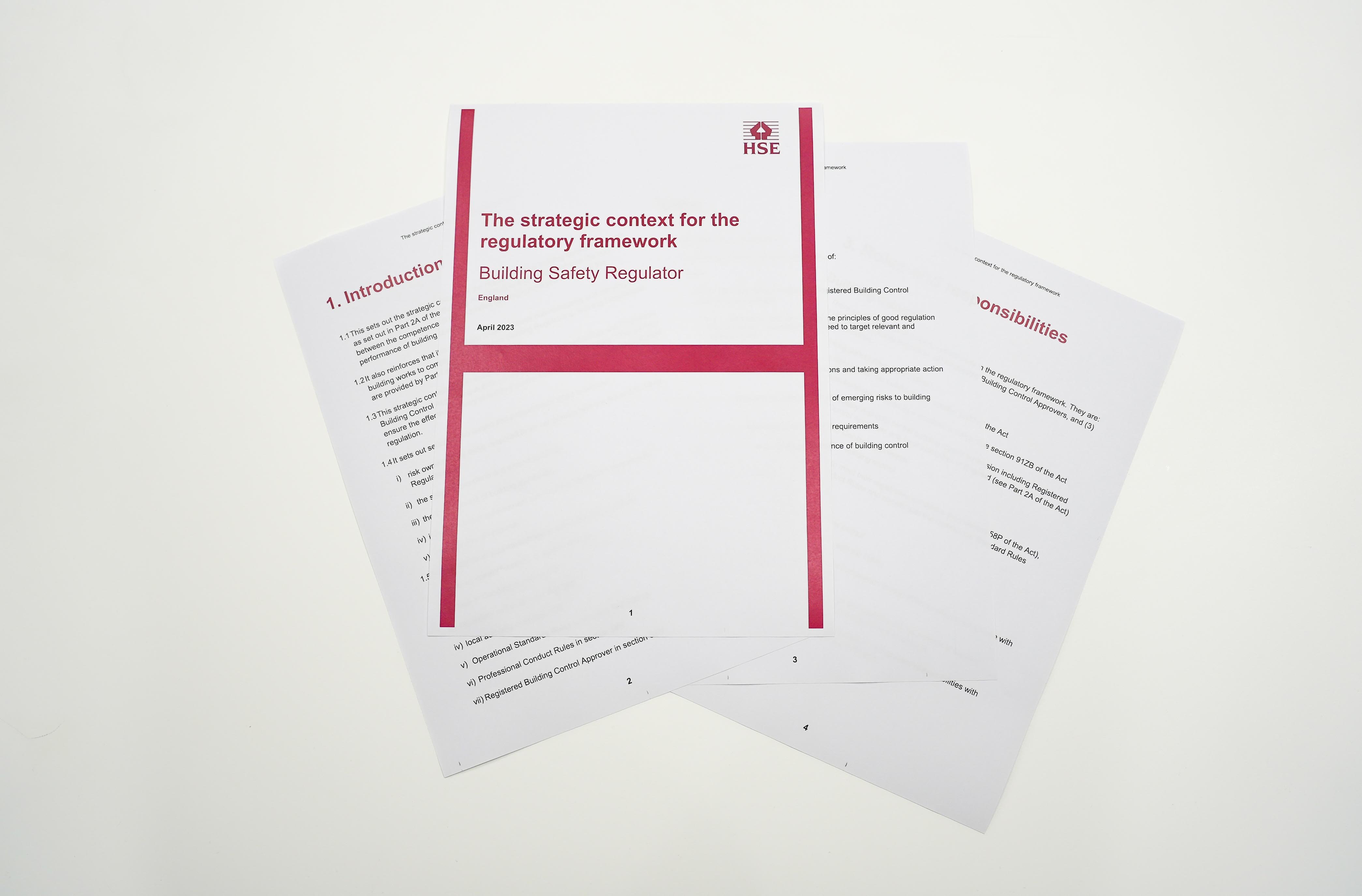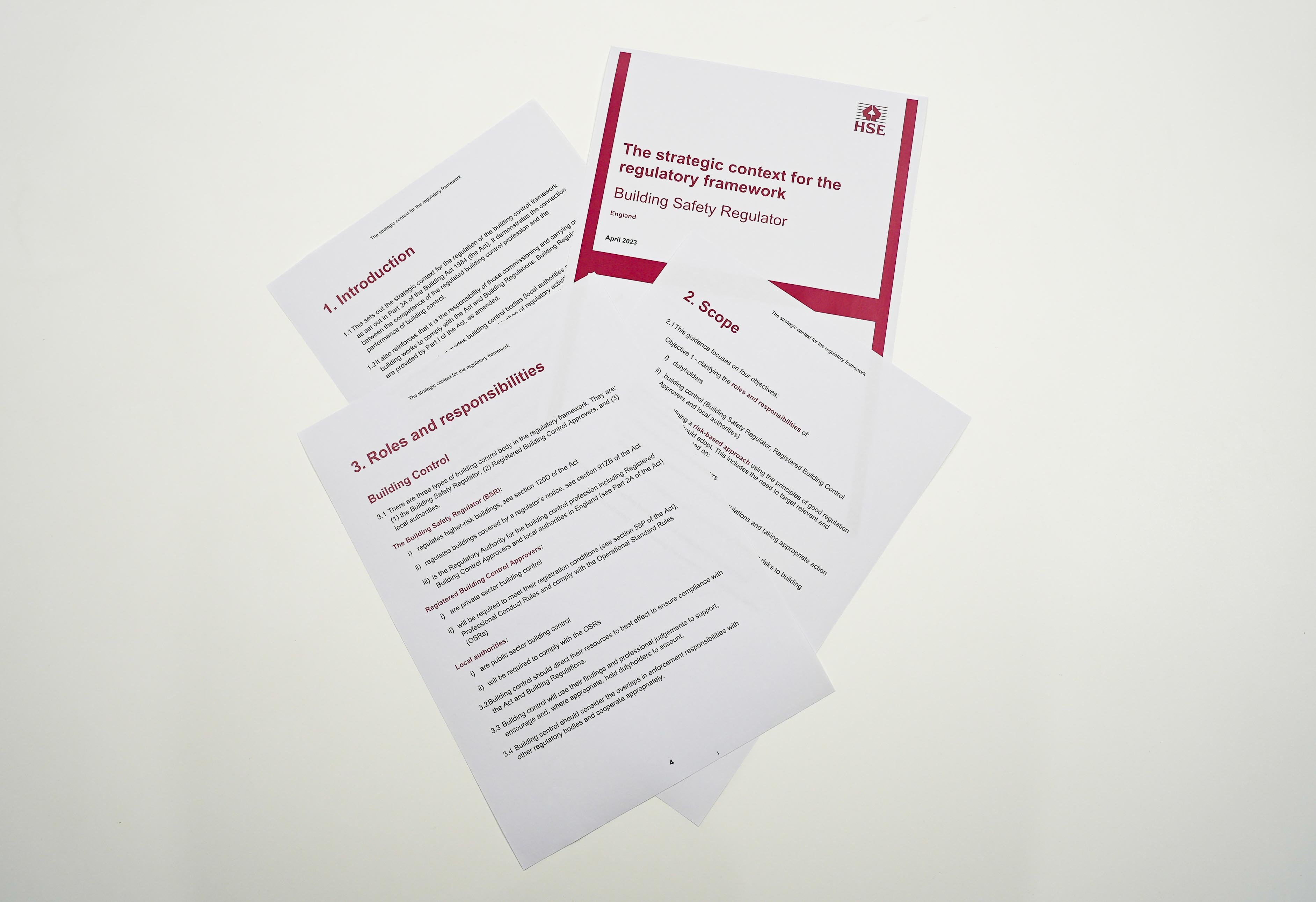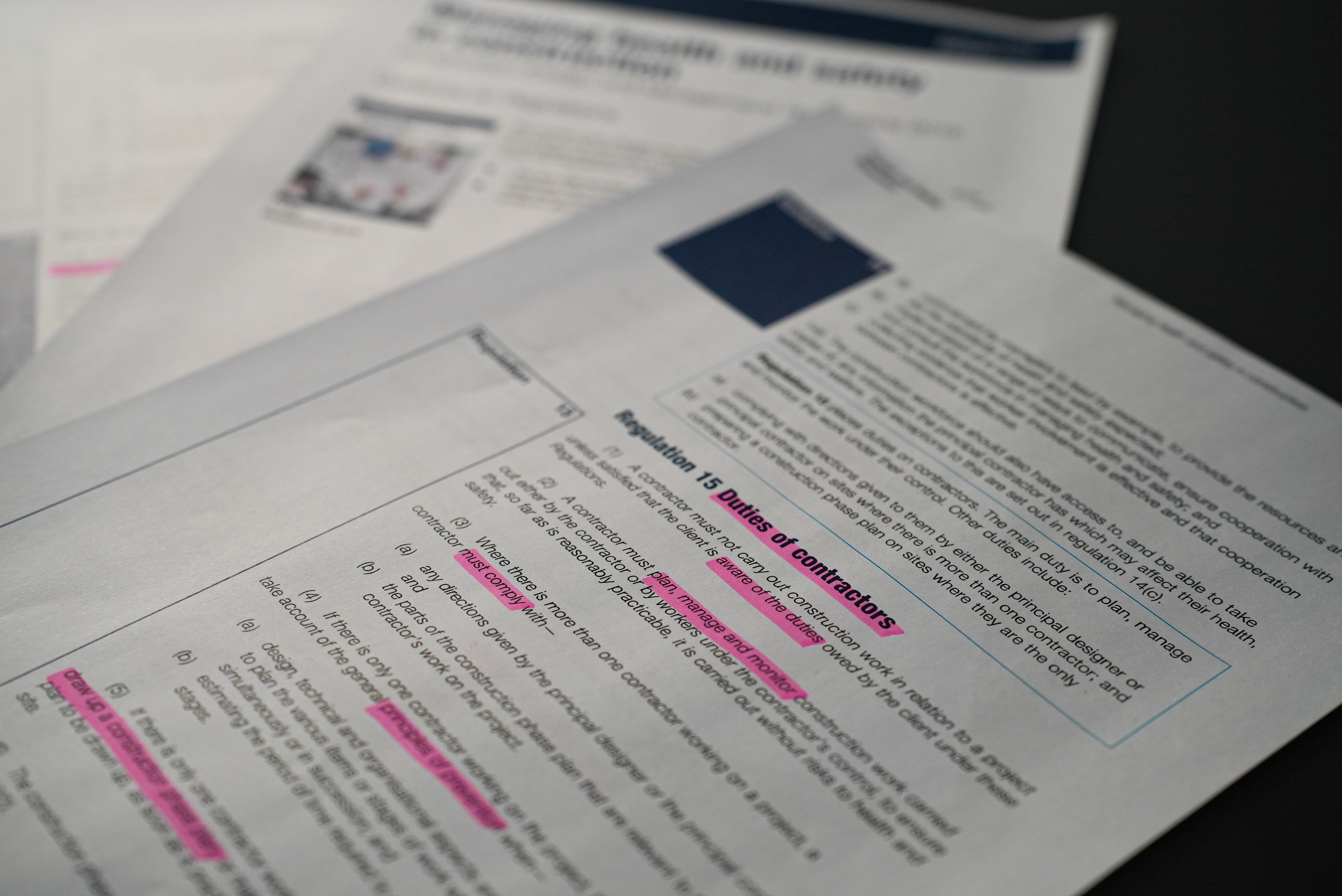The Building Safety Act 2022 marks a pivotal moment in the United Kingdom’s approach to building safety. It aims to overhaul the current regulatory framework, enhance the standards of living conditions, and ensure that high-rise residential buildings are constructed and maintained with the utmost regard for safety and resilience.
At the heart of this act lies the introduction of novel roles and responsibilities, presenting a significant shift for stakeholders within the construction and property management sectors. However, navigating these roles can be confusing, as there is uncertainty regarding their hierarchy and the extent of regulatory authority they possess. Hence, this article delves into these newly established roles, their associated responsibilities, and their anticipated impact on the industry.
There are three types of building control bodies in the regulatory framework. They are: (1) the Building Safety Regulator, and within 2), the Building Control Bodies, you have a) Registered Building Control Approvers, and b) local authorities.
Building Safety Regulator
The Building Safety Regulator (BSR), established within the Health and Safety Executive, brings a new level of oversight and enforcement capabilities that were lacking under the Building Regulations 2010. The Regulator has the authority to oversee the safety and performance of all buildings, with a particular focus on high-risk residential buildings, and has powers to enforce compliance and hold those who break the rules accountable.

- Centralised Oversight: The Building Safety Regulator (BSR) is established within the Health and Safety Executive (HSE) and serves as a centralised body with oversight of all aspects of building safety for high-rise and other buildings. This centralisation addresses the fragmented approach under the Building Regulations 2010, where responsibilities were spread across local building control bodies and other agencies, leading to inconsistencies in enforcement and compliance.
- Enhanced Focus on High-Risk Buildings: One of the key limitations of the Building Regulations 2010 was the lack of specific focus on high-rise residential buildings, which pose unique safety risks. The BSR specifically targets these buildings, ensuring that they meet stringent safety standards throughout their lifecycle—from design and construction to occupation and maintenance. This lifecycle approach ensures continuous compliance and safety, rather than a one-time check at the construction phase.
- Issuing permits: Regulators may review building plans, issue permits for construction projects, and conduct inspections during various stages of construction to ensure compliance with applicable codes and regulations.
- Higher Standards and Stricter Compliance: The BSA empowers the BSR to enforce higher safety standards and ensure stricter compliance. This includes the ability to prosecute breaches of building regulations, which strengthens the regulatory framework and ensures that building owners and managers take their responsibilities seriously. The BSR has a range of enforcement tools at its disposal, from issuing stop notices for unsafe construction activities to imposing sanctions on those who fail to comply with safety standards.
- Investigating complaints: Regulators respond to complaints about building safety violations, investigate reported incidents, and take enforcement actions against property owners or developers who fail to comply with regulations.
- Engagement with Residents: A significant limitation of the Building Regulations 2010 was the limited mechanism for resident engagement and feedback on safety concerns. The BSA mandates the BSR to establish channels for residents of high-rise buildings to raise concerns about building safety directly. This ensures that residents' voices are heard and that their safety concerns are addressed promptly, fostering a culture of safety and transparency.
- Professional Oversight and Competence: The BSR is tasked with improving the competence of professionals working in the building industry, from designers and builders to managers. This involves setting standards for training and certification, addressing a gap in the Building Regulations 2010 related to the skills and knowledge of those responsible for building safety. Ensuring that all professionals involved in the construction and maintenance of buildings are adequately trained and certified helps to prevent safety oversights and errors.
The establishment of the Building Safety Regulator is part of a broader set of reforms intended to overhaul the UK's approach to building safety, making buildings safer for residents and restoring public confidence in the built environment. These reforms were significantly influenced by the recommendations of the Grenfell Tower Inquiry and the Independent Review of Building Regulations and Fire Safety, led by Dame Judith Hackitt.
Building Control Bodies
Building control bodies refer to the organisations or governmental departments responsible for overseeing and enforcing building regulations and standards. They can be part of local government structures or private companies authorised to carry out building control functions. They play a critical role in the construction phase, ensuring that designs and construction work meet the necessary standards for health and safety, energy conservation, and accessibility. They play a crucial role in ensuring that building work complies with legal requirements set out in the building regulations.
This involves various tasks throughout the building process:
- Providing Advice: BCBs offer guidance to clients on how to comply with the building regulations. This can include explaining the specific requirements relevant to the project and offering advice on the information that needs to be submitted for approval.
- Checking Proposals: BCBs review building plans and proposals to ensure they meet the standards outlined in the building regulations. They assess aspects such as structural integrity, fire safety, accessibility, and energy efficiency.
- Issuing Certificates: BCBs may issue certificates at different stages of the project. A plans certificate may be issued upon request, confirming that the proposed plans comply with the regulations. A final certificate is issued upon completion of the project, verifying that the finished building meets all regulatory requirements.
- Inspections: BCBs conduct site inspections during various stages of construction to ensure that the work is being carried out in accordance with the approved plans and regulations. They may inspect the foundation, structural elements, insulation, fire protection measures, and other critical aspects of the construction process.
BCBs can operate in two main forms:
- Local Authority Building Control: This refers to the building control department within the local government authority (public sector). They have the authority to enforce building regulations within their jurisdiction. They must comply with Operational Standard Rules (OSRs).
- Registered Building Control Approvers: Previously called Approved Inspectors, these are private sector building control individuals or organisations that have been approved by the government to carry out building control services. They operate independently of local authorities and offer an alternative option for overseeing compliance with building regulations. They will be required to meet their registration conditions (section 58P of the Building Safety Act), Professional Conduct Rules, and also to comply with the OSRs.
The choice between using the Local Authority Building Control - going public - or an Registered Building Control Approver - private - typically lies with the person or organisation undertaking the building work. They may consider factors such as convenience, expertise, and efficiency when making this decision.

Dutyholders
One of the key aspects of the Building Safety Act is the introduction and definition of specific duty holder roles during the design, construction, and occupation phases of a building's lifecycle. These roles are somewhat analogous to those defined in the Construction (Design and Management) Regulations 2015 (CDM 2015) but are tailored to address the safety of buildings in use, particularly focusing on fire and structural hazards. Any building work where Building Regulations are required will be subject to the new Duty Holder Regime.
Responsibilities of Duty Holders
Generally, the responsibilities of duty holders may include, but are not limited to:
- Ensuring Compliance: Adhering to relevant health and safety legislation and guidelines to ensure that all aspects of work are conducted safely.
- Risk Management: Identifying, assessing, and managing risks to workers and others affected by the work.
- Information and Training: Providing appropriate information and training to employees and contractors to ensure they can carry out their work safely.
- Cooperation and Coordination: Working in cooperation with other duty holders on the project to ensure that risks are managed effectively across all phases of the project.
- Consultation with Workers: Engaging with workers to get their input on health and safety matters affecting their work.
1. Client
The client is the individual or organisation for whom a building project is being carried out. In the context of the Building Safety Act:
- Responsibility: The client has the ultimate responsibility to ensure that the project is managed safely and complies with building regulations from the outset. This includes ensuring that the other duty holders (Principal Designer and Principal Contractor during the construction phase) are competent and have the necessary resources.
- Safety Focus: The client must consider the safety of future occupants and the maintenance of the building, ensuring that design and construction decisions contribute to a safe living environment.
- Engagement: Clients are expected to work closely with Principal Designers and Principal Contractors to establish and maintain safety and health standards throughout the project lifecycle.
2. Principal Designer
The Principal Designer is a duty holder with control over the pre-construction phase of a project, focusing on health, safety, and building safety risks:
- Design Phase Leadership: They lead on safety in the design phase, ensuring that potential risks are identified, eliminated, or mitigated through design decisions.
- Collaboration: Principal Designers must collaborate closely with clients and Principal Contractors to ensure that health and safety considerations are integrated into project management and decision-making processes.
- Documentation and Information: They are responsible for compiling and handing over relevant information to help manage identified risks throughout the building's lifecycle, ensuring this information is available to those who need it, including future duty holders.
3. Principal Contractor
The Principal Contractor takes control of the construction phase, managing on-site risks:
Construction Phase Plan: They must prepare and implement a construction phase plan that outlines how health and safety risks will be managed and mitigated during construction.
Site Safety: The Principal Contractor is responsible for securing the site and ensuring that work is carried out safely and in compliance with the agreed plans, including coordinating the work of contractors to manage risks effectively.
Communication: They must ensure effective communication and collaboration between all parties involved in the construction process, including subcontractors and workers, to maintain a safe working environment.


Conclusion
In conclusion, the Building Safety Act 2022 represents a monumental shift in the United Kingdom's approach to ensuring the safety and resilience of its built environment, and the introduction of the Building Safety Regulator, along with new Building Control roles and clarified responsibilities for duty holders, signifies a proactive step towards enhancing building safety standards and enforcement mechanisms. By centralising oversight, enhancing focus on high-risk buildings, and prioritising resident engagement, the Act aims to foster a culture of safety and transparency throughout the construction and management processes. Through continued collaboration and adherence to stringent safety standards, stakeholders can work towards mitigating risks and ensuring the well-being of all those who inhabit and interact with the built environment.

